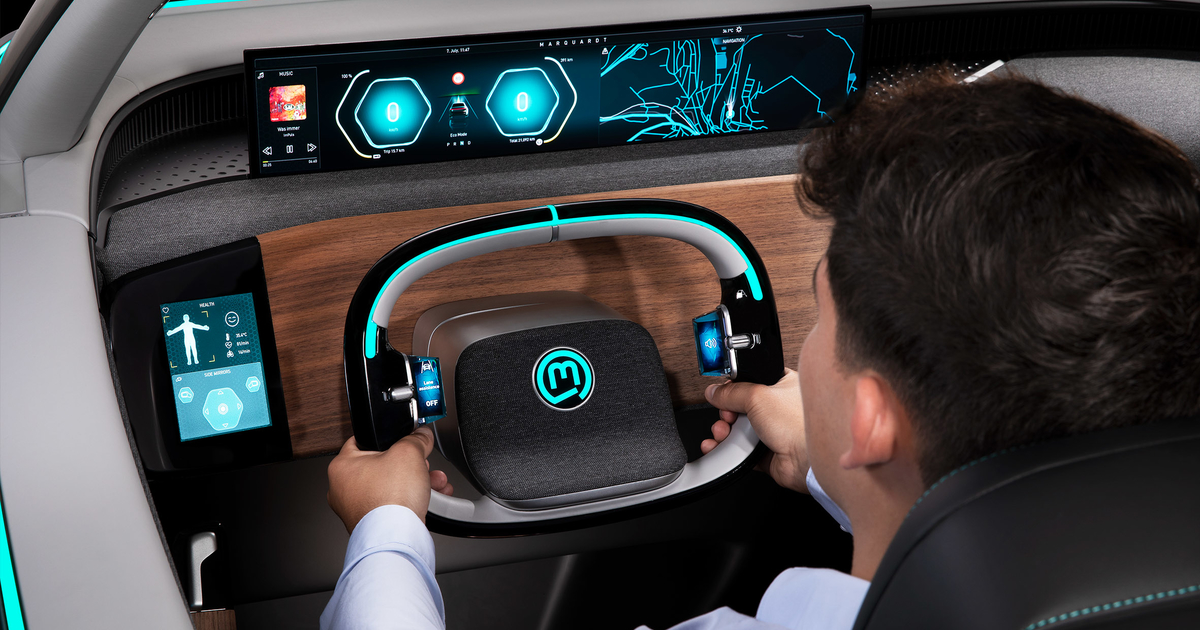
Ever since touch screens started finding their way into cars around 20 years ago, interior designers have been trying to figure out what to do with all the switches, buttons and knobs.
Take them away, as Honda did with the radio controls in many vehicles six years ago, and customers get annoyed. Honda eventually reinstalled the good old-fashioned mechanical audio volume knob; Ford also brought back some switches and knobs.
European automakers have taken plenty of heat for burying key functions in infotainment systems, making the driver scroll through menus just to make a simple adjustment. There might be another way to replace intuitive old-fashioned switch gear with electronics that does not infuriate drivers.
I recently spent an hour chatting with executives and engineers at Marquardt Group’s North American tech center in suburban Detroit. I also tested some of the future technologies the 98-year-old German supplier is developing.
Marquardt may not be a familiar name, but the company is a Tier 1 supplier whose products are used by major brands. The thin band of cool color-changing LED lights inside Mercedes-Benz vehicles? Marquardt’s. The steering wheel switches on General Motors trucks and SUVs? Marquardt’s. It’s a big-time company that’s been making interior switches and lighting for light vehicles for half a century.
Like every other supplier, Marquardt is embracing the EV era, working to replace old-fashioned mechanical parts with lighter, simpler and easier to use electronic components.
Marquardt built a demonstration interior that houses the technology that engineers are working to bring to production. Here’s what caught my attention as being smart solutions:
- Capacitive touch doors: Old-fashioned mechanical door handles and locks are gone. The door can be opened and closed with just a slight touch on the door panel or it can be programmed to open by sensing a hand movement. It can also be controlled by a phone. An added benefit: The door exterior is more streamlined, aiding aerodynamics.
- Switch icons projected on the dash eliminate mechanical switches. The “switch” icons operate when a finger touches the projected icon and interrupts the light beam — not unlike how infrared ray protects valuable artifacts in museums from harmful touch or even theft.
- A futuristic EV charge port is probably the coolest thing I have seen recently. It has a holographic “screen” impervious to fingerprints, road grime, snow and moisture.
- Crystal steering wheel screens with thumb-operated scrolling. Two small crystal screens on the inside of the steering wheel can be programmed to handle many of the car’s functions. It just takes a very quick movement of the thumbs to change the menus.
Branden Jarbo, Marquardt’s R&D innovation technical project manager, demonstrated the technologies and explained how they work.
“The one thing you can say about all this technology is that it is getting smarter,” Jarbo said. “The old-fashioned switch, which used to be a [mechanical] contact for us, is now a microcontroller sitting on a [controller area network] bus communicating with a supercomputer in the vehicle. It’s providing a heck of a lot more information.”
Some of Marquardt’s future projects gave me hope that engineers and interior designers are finally figuring out how to make electronic technology just as quick and simple to use as the knobs and levers and buttons that are so intuitive that they don’t distract and don’t require a degree in computer programming to operate.